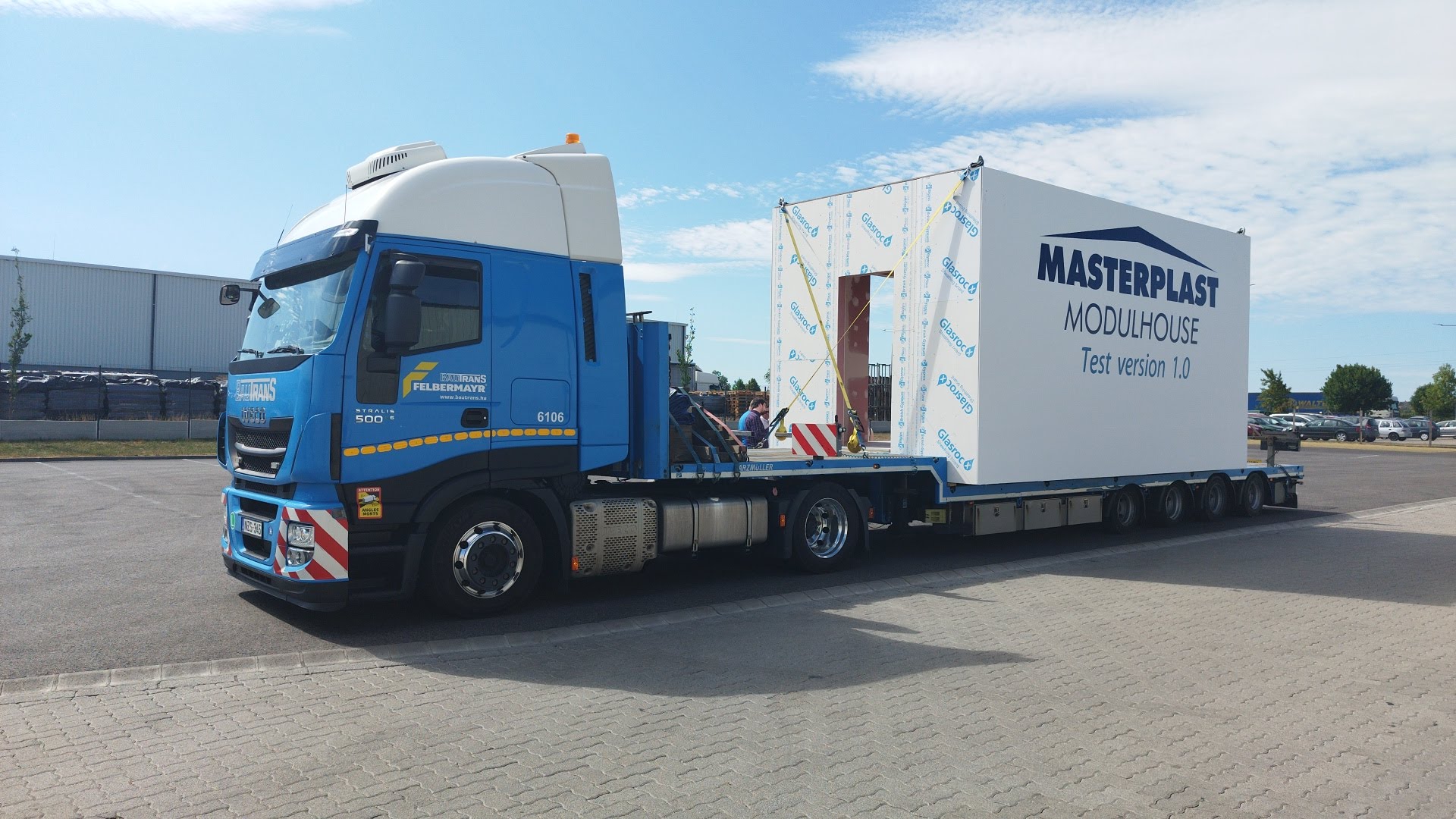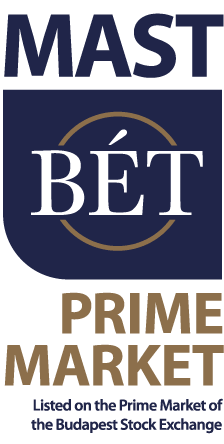In Hungary, construction industry experts are forecasting a reduction in the number of new buildings despite the extended deadline for VAT relief of 5% on buying new flats, partly because the discounted financial options are no longer available and the number of state investments is decreasing, too. For the construction industry as a whole, however, some segments may significantly be expanding in the following years.
Some subsegments of new constructions are to be expanded
Even with the expected setback, certain subsegments within the new builds segment might experience rapid growth in the following years. The heating competition puts forward features like quick and accurate construction or high-quality technical implementation, highlighting alternative construction systems. Modular construction technology, being a fast-growing innovative subsegment of the construction culture, is one of those systems. Changes in the construction industry and the application of modern technology in modular architecture create a competitive advantage for modular architecture in certain areas over traditional architectural methods. The contemporary and dynamic trends of modular architecture are prompting wider applications of its solutions across America and Western Europe, especially in the Netherlands, Belgium, England and the Nordic region. In these countries, the application of modular technology has decades of tradition: businesses with large-scale capacity are in operation, and a wide range of products are available, whereas in Central Europe no major market players are present yet, only smaller manufacturers have been operating so far.
Masterplast Modulhouse – The first major manufacturer in Central Europe
The biggest Hungarian construction material manufacturer identified the market opportunities of modular architecture and in the region firstly announced its planned investment in production development at its investor event in January. Masterplast COO and leader of the modular branch, Balázs Ács has shared more information on the current situation of the development, technological opportunities, and market and business expectations.

Modular architecture – Car manufacturing precision in construction
Masterplast’s modular architecture system is far from the house manufacturing technologies used in the 1960s and 1970s. The only similarity between them is the possibility of prefabricating large quantities of building modules under operational production, which enables rapid construction with low living labour presence on site. Nowadays, however, building element design is performed by using the latest industrial software, therefore the integrity and combination of elements and the nodal connection establishment are the results of a conscious design process. Due to the precision and technical thoroughness of the whole designing-manufacturing process, it seems to be closer to the car industry than construction. Strict quality control, reliable quality, and a high degree of precision can be achieved during operational production with the help of IoT devices. Work processes are segmented, comprising automated-mechanised phases, and simplified work phases that can be performed by unskilled workers. The production is independent of the seasons, time of day or weather, ongoing 365 days of the year, and the selection and implementation of materials are also standardised, therefore finding parallels and right angles does not depend on the steadiness of the builder’s hands.
Changes in the construction industry are also promoting the development of modular architecture
The construction industry across Europe is severely hit by the lack of contractors and professional workforce shortages. In addition, traditional on-site labour has its limitations and difficulties. Construction work cannot be in progress 24/7, and productivity might also be hindered by the changes in weather and seasons. Construction on-site is a complicated and complex process that needs the cooperation of several professions, furthermore, purchasing and transporting materials might cause major logistics challenges. Plus, market players have to face unplannable budgets and soaring prices.
The advantages of the traditional construction culture are that it can create varied, unique buildings, but due to its features, it is rather helpless, which limits the opportunities to produce and improve. Modular architecture can satisfy less unique and more modest needs, as it combines type plans with building modules, only making the surface design unique. In turn, the on-site living labour requirements are minimal, and clients might shortly have their buildings of high quality and technical content constructed in just a few weeks.
Booming technology, more ways of application
Modular architecture is becoming a competitive solution in an increasing number of ways of applications due to its advantages coming from the technology used. Modular technology can be used to build apartment complexes, terraced houses, office buildings, hostels for workers or students, doctor’s surgeries, changing rooms, gyms, social buildings, and auxiliary buildings for industrial halls. Masterplast’s Modulhouse system is used to manufacture building modules of such exceptionally firm and rigid 3D steel frame systems that are suitable for constructing 4-storey buildings, even on their own. If these systems are equipped with additional reinforcement, even 12-storey medium-high buildings can be constructed. Besides, there are more simple, hybrid applications, such as placing a prefabricated bathroom module inside a traditionally constructed building.
The type plans and the operational manufacturing technology can be continuously improved, therefore, the rapid application of innovative solutions allows rapid evolution. Modular buildings can be easily extended with additional modules, or they can even be moved away. Modular technology enables the development of smart home solutions, where one integrated system controls all the mechanical systems and regulates ventilation, temperature and lighting, in accordance with the external circumstances and current use.
What about energy efficiency?
There is not any field of application today where low energy requirement is not an appealing option, and buildings constructed with modular technology might be really energy efficient. With Masterplast’s modular building system, the building modules will fall under the highly favourable energy category AA at least. Furthermore, we are planning to develop a building module that may make a building complex an island-like self-sustaining building, thanks to energy production and storage. This module might be complementary to the previously built building modules as well.
What is the current status of the development and when will Masterplast building modules come on the market?
The development is progressing faster than planned, the investment-design phase has been completed, and the first type plans and prototypes have also been prepared. Currently, special product testing and licensing procedures are ongoing. In this phase, we are testing the packaging and the site delivery of modules, while fire protection is also being examined. The next step will be to construct 3 prototype buildings: a detached house, an office building and a social building. We are planning to launch operational manufacturing at the beginning of 2023, and then the system will be introduced to the market. Our focus is primarily on East-Central Europe, apart from Hungary, Slovakia, Czechia, Croatia, Romania and Poland are our potential target markets.
What business impact is Masterplast expecting?
We are thinking about manufacturing 500 building modules in 2023, with a total floor area of 8,000 m2, generating a revenue of 10 million EUR, then we are expecting rapid growth in the following years. Our manufacturing system makes it possible to establish new production plants if the business improves quickly. We believe that, similarly to the Western European processes, the market of modular building systems can expand rapidly in the Central European region as well due to the fact that, besides smaller manufacturers, Masterplast will step up as the first major market player providing greater production capacity and professional solutions.
Source: Portfolio

Masterplast Nyrt.
Founded in 1997, the Masterplast group is one of the leading building material producer and distributor companies in the Central Eastern European region. The company group owns subsidiaries in 10 countries, and sells products in a further 30 countries. The company is registered in the premium category on the Budapest Stock Exchange, and had revenue of 201,8 million euros in 2022.

